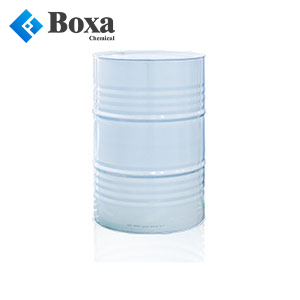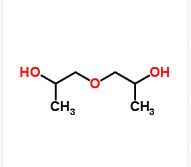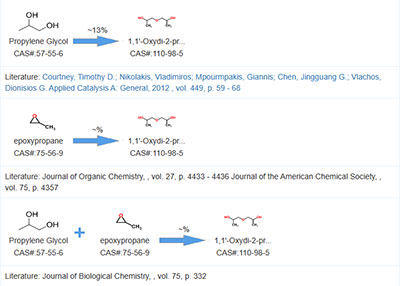1.What is Dipropylene Glycol?
Dipropylene Glycol, also known as 1-propanediol, 2-hydroxypropyl ether, 2,2-dihydroxydipropyl ether,
also known as DPG. Dipropylene Glycol is a odorless, colorless, sweet tasting, water-soluble, and
hygroscopic liquid at room temperature. Soluble in water and toluene, can be mixed with methanol and
ether, has a spicy sweet taste, and is non corrosive. Has minimal skin irritation and low toxicity.
Flammable when exposed to open flames and high heat. It can form explosive mixtures with air. It is
suitable for essence, spices, cosmetics and other uses that are sensitive to odor. The molecular
formula is C6H14O3.
2.What does Dipropylene Glycol do?
1) Dipropylene Glycol is the most ideal solvent for many essence and cosmetics. This raw material
has good water, oil and hydrocarbon co solubility, and has a slight odor, minimal skin irritation,
and low toxicity. The distribution of isomers is uniform and consistent, with excellent quality;
2) Dipropylene Glycol can also be used as a coupling agent and moisturizer in various beauty and
cosmetic applications. In the field of perfume, the proportion of Dipropylene Glycol used exceeds
50%. In some other application areas, the usage ratio of propylene glycol is generally within 10%
(by weight). Some specific product application fields include: hair curling liquid, skin cleaning
liquid (cold cream, bath gel, bath liquid and skin care liquid) deodorant, face, hand and body skin
care products, moisturizing skin care products and lipstick, etc;
3) Dipropylene Glycol is also used in the production of unsaturated and saturated resins, and the
resins produced from it have superior flexibility, crack resistance, and weather resistance. The
product has long-term resistance to yellowing and denaturation.
4) Used as cellulose acetate; Nitrocellulose; Shellac varnish; A solvent for castor oil. It can also
be used to make plasticizers, fumigants, synthetic detergents, etc.
3.Is Dipropylene Glycol the same as Propylene Glycol?
Dipropylene Glycol and
Propylene Glycol are not the
same substance. Dipropylene Glycol, also known as Dipropylene Glycol, is an odorless, colorless,
sweet, water-soluble, and hygroscopic liquid. It is soluble in water and toluene at room temperature
and can be mixed with methanol, ether, etc. And Propylene Glycol (1,2-propanediol) is an alcohol
substance with the chemical formula C3H8O2. It is a colorless, odorless, slightly viscous liquid
with a slightly thicker texture than water and almost no taste.
From a chemical structure perspective, the molecular formulas of Dipropylene Glycol and Propylene
Glycol are different, so their properties and uses also differ. Dipropylene Glycol is suitable for
odor sensitive uses such as essence, fragrances and cosmetics, while Propylene Glycol is widely used
in cosmetics, such as humectants, softeners, solvents, etc.
In summary, although both Propylene Glycol and Propylene Glycol belong to alcohol compounds, they
have significant differences in chemical structure, physical properties, and application fields.
4.Is Dipropylene Glycol safe for skin?
Dipropylene Glycol has low toxicity and is not harmful to the skin when used normally. Improper use
can cause skin allergies.
At room temperature, it is a odorless, colorless, sweet, water-soluble, and hygroscopic liquid. Its
main function in cosmetics is to moisturize the skin, with minimal irritation and low toxicity. If
added reasonably, it is harmless to the skin.
5.What is Dipropylene Glycol made from?
Prepared by condensation reaction of 1,2-epoxypropane with 1,2-propanediol in the presence of 85%
sulfuric acid.
The reaction solution is neutralized with sodium hydroxide solution, filtered, distilled under
reduced pressure, and then distilled under normal pressure. The 229-233 ℃ fraction is collected to
obtain Dipropylene Glycol.
When producing propylene glycol through the hydration of 1,2-epoxypropane, Dipropylene Glycol is a
byproduct.
[Industry Chain] Epoxy propane, propylene glycol, propylene glycol, coupling agent, moisturizing
agent, solvent.






